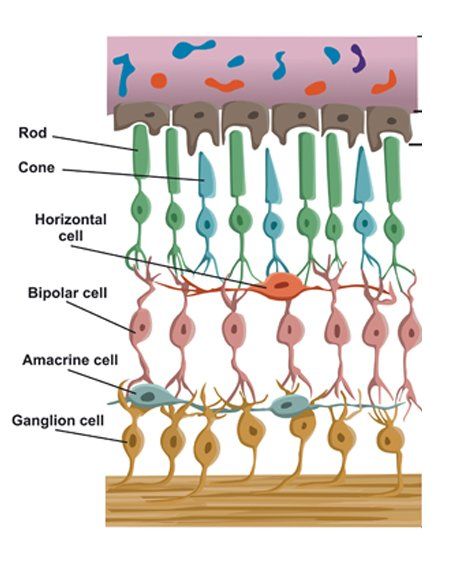Retinitis Pigmentosa Treatments NYC by Marc Bystock L.Ac.
"Acupuncture treatments improve blood flow to the retina. This increased perfusion delivers an influx of rich oxygenated blood and other nutrients to the cones and the rods."
-Marc Bystock L.Ac.
Contact Marc Bystock, Leading Holistic Acupuncturist in NYC for a Free Consultation.
CONTACT MARC
VERIFY YOUR HEALTH INSURANCE
Acupuncture Retinitis Pigmentosa Treatment by Marc Bystock NYC Acupuncturist in Midtown Manhattan NY 10016
What is Retinitis Pigmentosa?
A genetic degenerative disorder of the eyes, Retinitis Pigmentosa, may cause visual impairment that could result in loss of sight. Retinitis Pigmentosa varies in the way that it affects individuals. In some patients, the disease is expressed in early childhood, while others are affected later in their lives. In general, most people who discover symptoms later in life often have more severe outcomes. Although this is not absolute for everyone.
Retinitis Pigmentosa (RP) may affect over five million people worldwide.
As the name implies, Retinitis Pigmentosa is responsible for a group of disorders affecting the retina's photoreceptors. The retina is the structure that lies at the back of the eye, complete with rods and cones. The retina senses light then relays the electrical energy via the optical nerve to the brain for interpretation. Rods are located at the outer ring of the retina and are the receptors responsible for peripheral vision. Cones can be found in the retina center and are the receptors responsible for central vision and color vision. These are referred to respectively as rod and cone dystrophies.
Initially, most RP patients will experience night blindness, then some peripheral vision loss causing tunnel vision. Eventually, at the late stage, central vision loss may occur.
What Causes Retinitis Pigmentosa?
Most cases are associated with monogenetic variant disorders, which means that it only takes one gene to be defective for RP. to occur. There are a small percentage of people with Retinitis Pigmentosa who have no known familial history at all.
More than thirty different genes are known to be involved in Retinitis Pigmentosa. Some research suggests mitochondrial dysfunction to be a leading causative factor.
Retinitis Pigmentosa is usually involved with a malfunction of either the rods or the cones or the cells that connect them.
Symptoms of Retinitis Pigmentosa
- Nyctalopia-is the inability to be able to see objects in the dim light or night blindness clearly
- Slow loss of peripheral vision, also known as side vision, which leads to tunnel vision, patients may accidentally bump into things
- The loss of central vision or detailed vision usually resulting from damage to the macula, the center of the retina
- Color vision deficiency or color blindness ranging from mild to severe
- Difficulty seeing fine print
- A challenge seeing smaller defined objects
- Some patients may experience constant glare
- Some patients with Retinitis Pigmentosa may go blind, but most will maintain some vision
- Blurry vision
- Flashes in vision with an increase in frequency
In many cases, initial symptoms occur as night blindness and loss of peripheral field vision due to degradation of the rods. Loss of daytime vision, color vision dystrophy, and central vision loss may occur in the late stages of development.
How is Retinitis Pigmentosa Diagnosed?
- Visual field test: Retinitis Pigmentosa may cause loss of peripheral vision. Visual field testing can diagnose any loss of side vision by finding blind spots.
- Optical Coherence Tomography: OCT imaging can take detailed pictures of the retina. By examining these images, an eye doctor can look for changes in the retina
- Genetic testing: A blood sample is taken and analyzed to determine if you may have any pre-existing genetics that could be associated with an RP. disorder.
- Electroretinography: This test measures the electrical response of the photoreceptors in the retina.
- Slit Lamp Biomicroscope: This examination may be used to look for the appearance of black or dark brown pigmentation. Slit-lamp microscopy may be the initial assessment method.
- Other eye disorders that could be associated with Retinitis Pigmentosa may include: Open-angle glaucoma- seen in about 3% of RP cases
- Myopia - Nearsightedness is associated with a high frequency of RP. cases
- Usher's syndrome - Hearing loss in combination with Retinitis Pigmentosa
- Kearns-Sayre syndrome - A mitochondrial disease consisting of RP and ptosis (eyelid drooping)
Conventional Medical Treatment
Unfortunately, there is currently no cure for Retinitis Pigmentosa. Western medicine primarily focuses on the management of the disease. Protocols involve supplementation using vitamin A, vitamin E, and other nutrients to slow down the decline once the disorder has manifested.
How Acupuncture Can Treat Retinitis Pigmentosa
In Traditional Chinese medicine (TCM), the meridians of the liver are linked to the eyes. In the view of TCM, the eyes will flourish when the blood produced by the digestive system and supplied by the liver can adequately reach the tissue and cells of the eyes.
If the liver, stomach, spleen, and kidneys possess weakness, vital nourishing blood will not reach the eyes. It is only by optimizing the condition of the liver and other key organs that we can provide oxygen and other nutrients to flow to the eyes. Therefore, the eyes reflect the condition of the liver and other associated organs.
According to a 2014 study performed by Johns Hopkins University, six of the twelve RP. subjects tested (50%) had measurable, significant visual function improvements after receiving acupuncture treatments. The other 50% showed some improvement over time.
Acupuncture treatments improve blood flow to the retina. This increased perfusion delivers an influx of rich oxygenated blood and other nutrients to the cones and the rods.
I select the best methods from the Microacupuncture, Acunova, and Traditional Chinese Medicine acupuncture systems that will benefit you the most. Treatments may include but are not limited to electro-acupuncture, cold laser therapy, pulsed electromagnetic therapy, food-based programs, herbs, whole food nutrition, exercises, and energy-biofeedback.
Acupuncture needles may be inserted on the hands, the feet, and around the eyebrows (Never in the eyes). Acupuncture will increase blood perfusion to the eyes, increasing the flow of critical nutrients to the tissues and cells while decreasing oxidative stress (think rusting) and inflammation.
Contact NYC Acupuncturist Marc Bystock L.Ac. for a Free Consultation Regarding Natural Retinitis Pigmentosa Treatments
My name is Marc Bystock, L.Ac. I've been practicing Traditional Chinese Medicine and acupuncture since 1996. I specialize in treating patients with degenerative eye disorders.
The best acupuncture RP. program available is to receive upwards of 20 plus treatments over two weeks.
Most patients will notice an improvement in vision after one to two weeks. I recommend a complete check-up by your ophthalmologist both before and after your treatments.
If you have been diagnosed with Retinitis Pigmentosa or know anyone who may suffer from this disorder, please contact me as soon as possible.
Please Contact me
today! I look forward to helping you to see a better world!
Additional Links
- About Retinitis Pigmentosa - National Human Genome Research Institute







